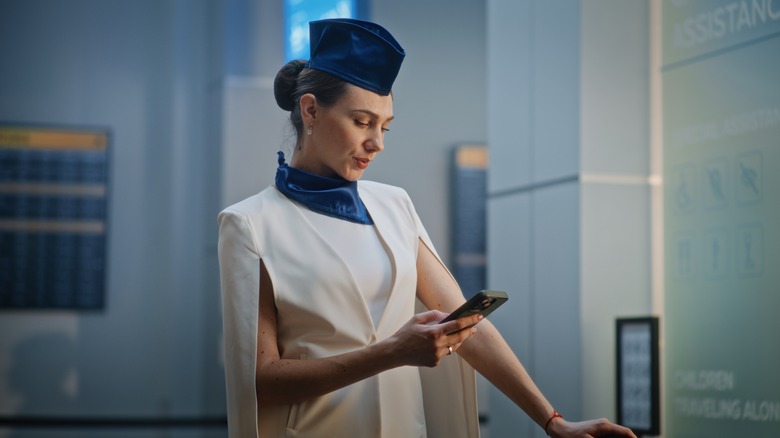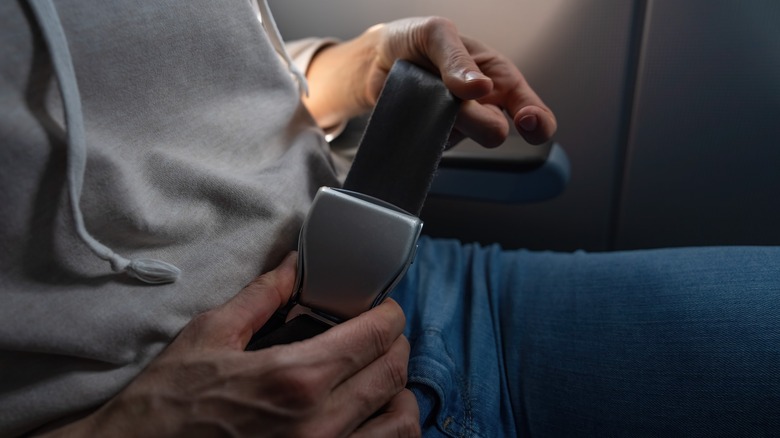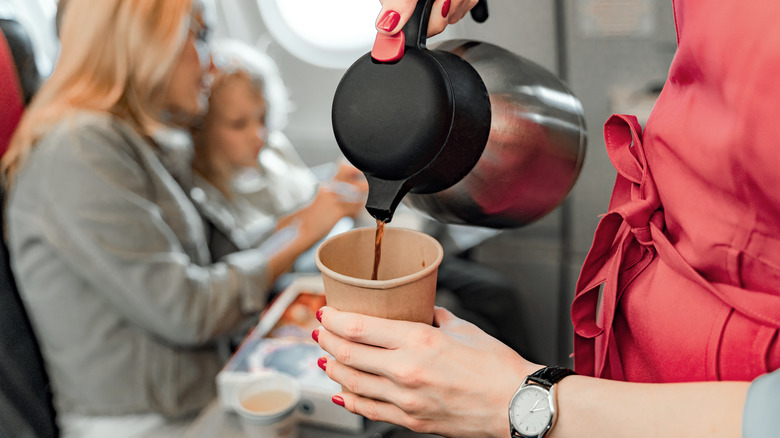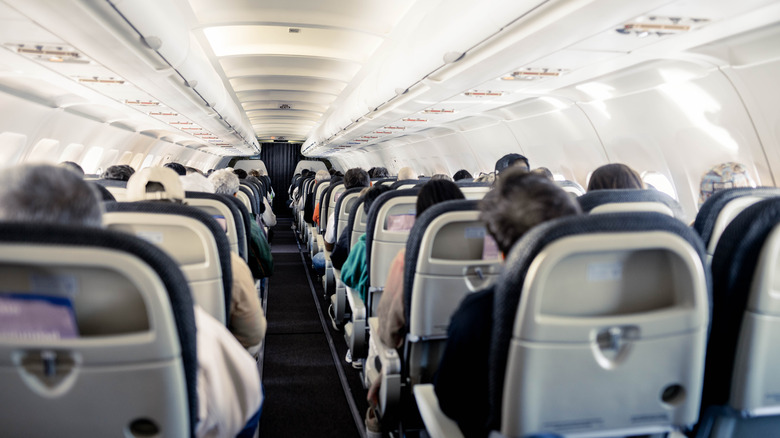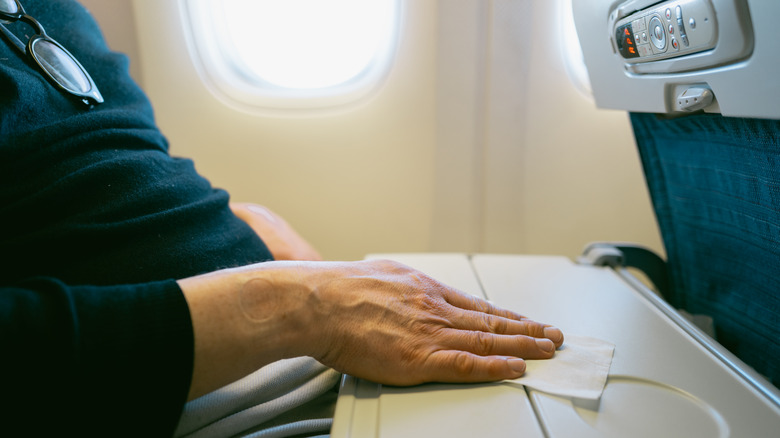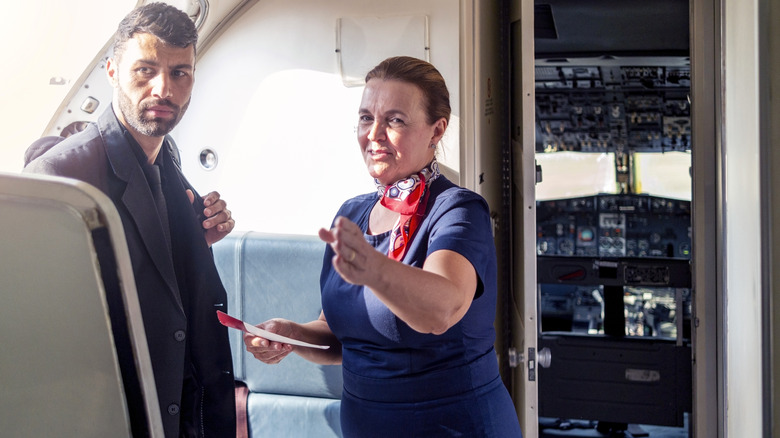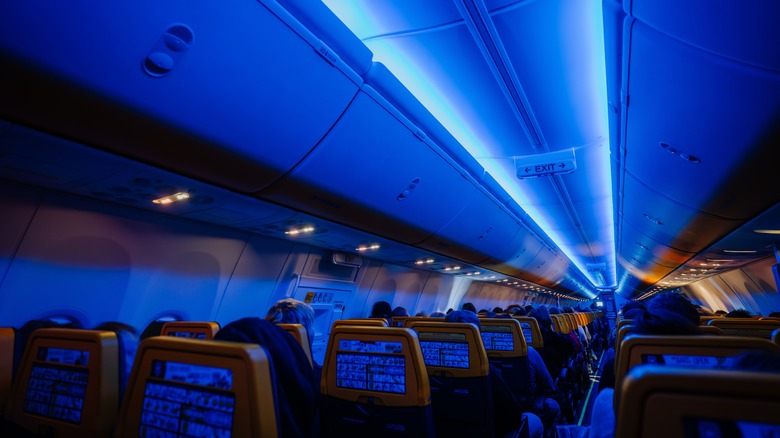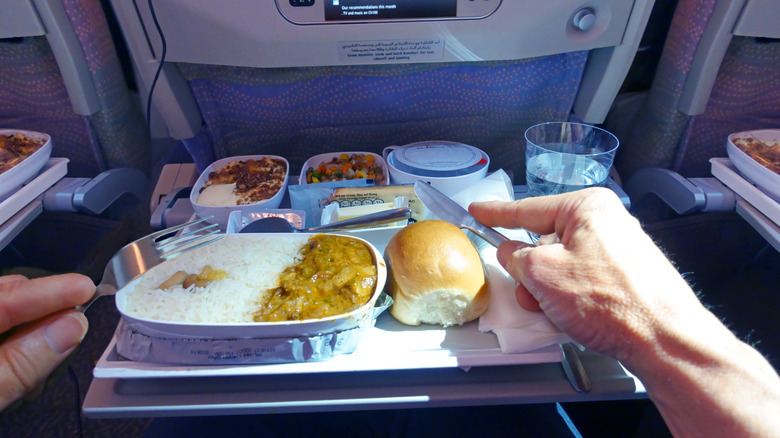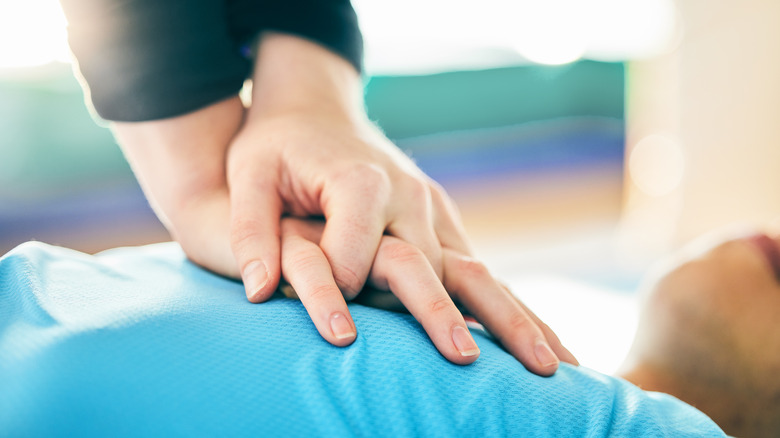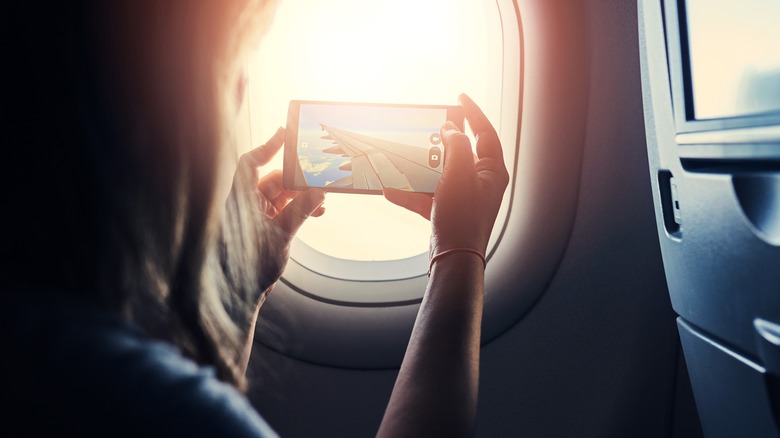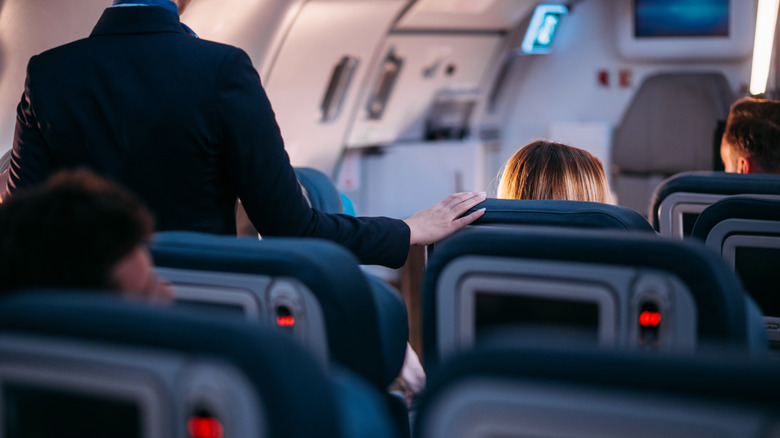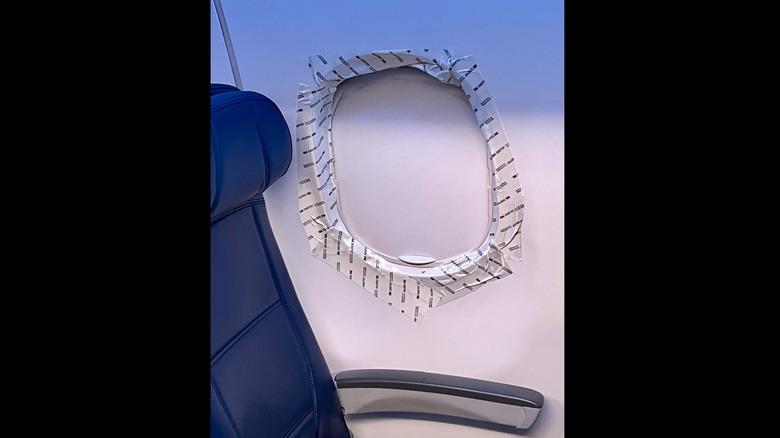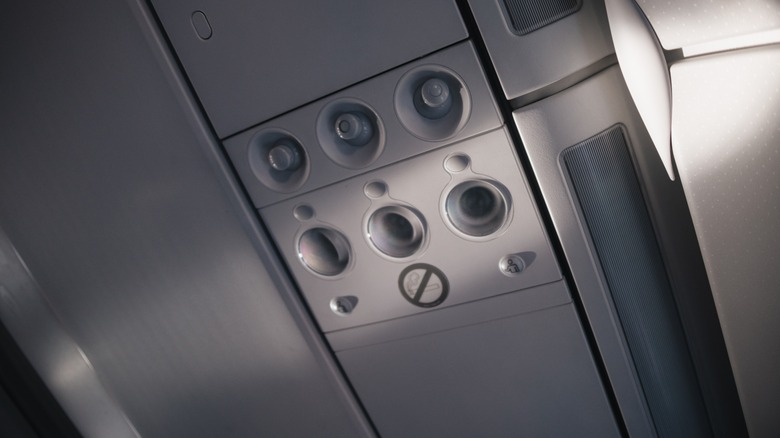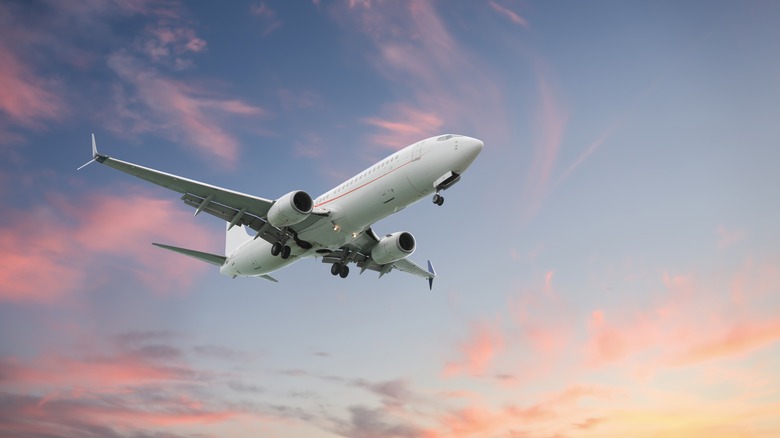Flight Attendants Reveal Disturbing Secrets Airlines Don't Want You To Know
Airlines love to keep their image polished: gleaming cabins, glossy route maps, a smiling crew promising a seamless journey. But ask a flight attendant what really happens at 35,000 feet, and a different picture emerges: one that's less about the best parts of the job, and more about the hidden (and sometimes disturbing) side of flying. These are the people who walk the aisle every day, strapping in through turbulence, dealing with medical emergencies, watching for hidden risks, and noticing what passengers miss.
From "fume events" that bring the smell of burning oil into the cabin, to the unsettling truth about what happens when someone dies in-flight, crews are trained for situations that never make it into safety videos. Most of what they share never appears in an airline press release, because the reality is messier than marketing. But behind the galley curtain, flight attendants trade these truths openly. And when they pull back the curtain, it's clear: the biggest secret in aviation is how much your safety depends on what passengers rarely see. Read on to discover the secrets that airlines don't want you to know.
Turbulence is getting worse
If you've noticed bumpier rides, you're not imagining it, and flight attendants feel it first. Research from the University of Reading shows severe clear-air turbulence over the busy North Atlantic rose 55% between 1979 and 2020, a climate-linked trend that tracks what crews report from the aisle. As the AFA, a union representing 50,000+ U.S. cabin crew, puts it, clear-air turbulence is "the most dangerous type of turbulence. It cannot be seen and is virtually undetectable with current technology. One second, you're cruising smoothly; the next, passengers, crew and unsecured carts or other items are being thrown around the cabin."
The Federal Aviation Administration (FAA)'s own tally shows who gets hurt most: from 2009 to 2024 there were 166 serious crew injuries versus 40 passenger injuries, meaning that about four in five victims were flight attendants .That's why the seat-belt chime makes crews quietly tense: a smooth cruise can flip to body-slam in seconds, especially with hot liquids and carts in play. One flight attendant spells out the stakes on Reddit: "For us flight attendants, turbulence is our number one cause of injury on an aircraft... at my airline, we are required to remain seated for any reports of moderate or greater [turbulence]."
The official guidance is deliberately boring because it works: the FAA advises keeping your belt fastened whenever you're seated, not just when the sign is on, and airlines must brief you to do exactly that even after the light goes off. Translation: click in, always. You'll make your own ride safer, and you'll be protecting the people serving you, too.
Skip the coffee... and the tea
Think twice before ordering the mystery brew at 35,000 feet. Your coffee and tea are typically made from the aircraft's onboard water tanks, regulated under the Environmental Protection Agency (EPA), but compliance and quality have varied over time. In 2019, eight years after the EPA introduced the Aircraft Drinking Water Rule, independent testing by Hunter College's NYC Food Policy Center found a wide variation in airline water quality, and advised travelers to "NEVER drink any water onboard that isn't in a sealed bottle."
Flight attendants' habits reflect that reality: one flight attendant told TIME, "I won't drink the tap water... I just don't always trust the cleanliness of the aircraft and the testing of it." Not every crew member flat-out refuses it, but even defenders hedge: "TLDR: water is safe to drink but not the best taste quality. I would drink it if I had to." Best practice for travelers mirrors the researchers' advice: choose sealed beverages, avoid brushing teeth or filling bottles at the lavatory sink, and never order drinks with ice in them.
Airlines often staff to the legal minimum
One of the quiet truths about modern air travel is just how leanly flights are staffed. In the U.S., federal law requires airlines to carry one flight attendant for every 50 passenger seats, with a minimum of two on any aircraft with more than 50 passengers. That rule was designed around evacuation safety, making sure every exit can be manned if needed, but in practice, it also sets the floor for scheduling. Airlines rarely roster more than the legal minimum because every additional crew member adds cost without being required by regulators.
Unions argue this is a recipe for exhaustion. The Association of Professional Flight Attendants (APFA) has repeatedly pushed for restored staffing on larger aircraft, warning that the one-per-50 ratio doesn't reflect the reality of cabins carrying 300+ people, saying: "reduced staffing is a widespread concern that directly impacts both the well-being of our Flight Attendants and the quality of service provided to passengers." From the aisle, the effect is obvious: crews hustling to serve, monitor, and de-escalate with little slack. Still, all isn't lost — this flight attendant says that this simple behavior can help ensure you get great service.
The dirtiest bits you actually touch aren't what you think
On fast turnarounds, there's simply no time for a deep scrub — so the spots you actually touch matter most. Researchers at the Georgia Institute of Technology swabbed real flights and focused on tray tables, seat-belt buckles, and lavatory door handles, confirming they're common contact points for cabin microbes. Add in the fact that norovirus can survive for days to weeks on hard surfaces and fabrics, and you start to see why crew quietly cringe when passengers use seat-back pockets as bins. However, there's no need to be too alarmed. The study's co-author, Professor Vicki Stover Hertzberg, clarified that "microbes are everywhere... an airplane is no better and no worse than an office building, a subway car, home, or a classroom."
You might want to think twice before using one airline courtesy labeled a 'disgusting germ factory', though. As one former Southwest crew member admitted on Quora: "Those blankets and pillows? Yeah those just get refolded and stuffed back in the bins between flights. Also, if you have ever spread your peanuts on your tray and eaten, or really just touched your tray at all, you have more than likely ingested baby poo. I saw more dirty diapers laid out on those trays than food. And those trays... I never saw them cleaned or sanitized once." That may sound extreme, but it echoes what other crew have confirmed in other forums: between sectors, cleaning is often limited to trash collection and crossing seatbelts.
Until last year, cabin crew weren't paid until the aircraft doors closed
One of the most surprising secrets about life in the cabin is that all that pre-flight hustle: hauling bags into overhead bins, helping parents with strollers, settling nervous flyers, didn't count towards flight attendants' paychecks until 2024. For decades, most U.S. airlines only paid flight attendants for "flight hours", meaning the clock didn't start until the plane actually pushed back from the gate and stopped the moment it parked. Everything else — boarding, delays, even cancellations — was essentially unpaid labor.
This pay gap became one of the biggest flashpoints in recent airline labor battles. In 2024, after threatening to strike, American Airlines flight attendants secured a historic deal that included boarding pay for the first time in U.S. airline history, along with double-digit raises and retroactive compensation. The breakthrough quickly spread: in early 2025, Alaska Airlines crews ratified a contract that also included boarding pay and significant salary increases. For passengers, a delay is mostly an annoyance. For crews, it meant hours of uncompensated labor layered on top of fatigue and disrupted rest schedules. Only now, after decades of silence about how little of their time "counted", are flight attendants finally being paid for the part of the job most visible to travelers: the intense, often chaotic minutes before the plane ever leaves the gate.
Dimming the lights isn't about ambience
When cabins dim for takeoff or landing, it isn't about creating ambience; it's a safety protocol. Lowering the lights helps passengers' and crew members' eyes adjust to darkness so that, in the event of an evacuation, emergency path lighting and signage are immediately visible. The FAA has long recommended the practice as part of evacuation preparedness. At the same time, window shades are kept open so that flight attendants can act as the aircraft's eyes, scanning outside for hazards such as fire, smoke, or debris before opening an exit.
As one cabin crew member explained on Reddit: "I am a flight attendant... it is so that if an evacuation is needed the flight attendants are more easily able to assess the conditions outside... to determine if an exit is usable." That small request at takeoff and landing ensures that, if something goes wrong, the crew aren't opening an exit into flames. So the next time you're asked to raise your shade or dim your screen, know it isn't about aesthetics — it's a subtle but vital part of making sure everyone can get out quickly and safely if the worst happens.
Cabin crew have different food options to passengers
Few topics inspire more mid-air debate than airline food. Those foil-covered trays might feel uninspired, but behind the scenes, the system is tightly regulated. In the U.S., caterers must register with the FDA and follow food safety rules under the Food Safety Modernization Act, while international standards require hazard checks and strict cold-chain storage. Meals are loaded chilled, held in refrigerated carts, and logged to ensure they stay below 41°F — sometimes prepared hours, even a day, before takeoff.
Still, not all crew are fans of the food. One flight attendant shared on Reddit, "Most crew members I know pack their meals, but typically will go out to eat with the crew once on a trip." That said, crew meals are often better. Ex-flight attendant Fatihah Sudewo admitted, "Our meals are slightly better than the passenger meals...there's at least a trolley dedicated for the crew" with fresh fruit, bread rolls, desserts, and drinks. So what's the real truth? The food is safe, but not always appetizing — try out this food request you didn't know you could ask of a flight attendant.
What really happens when a passenger dies on a flight
It's one of the most unsettling questions passengers have: What actually happens if someone dies on a flight? Official guidance from IATA is clear: crews will keep performing CPR until a doctor is on board, or one connected via the cockpit to ground-based emergency services, instructs them to stop. They're trained never to simply give up unless explicitly told to, or until medical teams take over once the aircraft lands. As one flight attendant described on Reddit: "Most of the time, the people who die don't just drop dead in their seats. They collapse, we give them CPR, there's a doctor call, and if it's serious enough we usually are already on our way rerouting to another airport."
If resuscitation fails and diversion isn't possible, the body must be stored until landing. Crews may use a body bag, but more often they move people around to free up the rear row. And if the flight is full? The deceased may remain seated next to other passengers, belted in, and discreetly covered with a blanket pulled up to the neck. As the same flight attendant explained: "If he was travelling with other people, great, they can sit next to him. If not, we offer them our spare seats." It sounds grim, but he also added perspective: "Honestly, if you're to have a stroke, come and have it on board. You have at least half a dozen people around you in a minute, complete with oxygen, defib, medical kit and lots of constant training." To summarize: death in the sky is unsettling, but crews are trained to manage it with dignity — even if that means the body remains in a seat, covered and belted, until landing.
Lithium battery fires happen more often than you think
If you've ever dropped your phone into the crack of an airline seat, resist the urge to fish it out. Lithium batteries don't just power personal electronics; they can also turn into one of the most common in-flight fire hazards. When a battery is crushed or punctured inside a seat mechanism, it can enter "thermal runaway": overheating, venting toxic fumes, and sometimes bursting into flames.Airlines train crews for this exact scenario. The FAA protocol is standard worldwide: hit the flames with a halon extinguisher, then cool the device with copious water or other non-alcoholic liquids for at least 15 minutes to stop it from reigniting.
Flight attendants emphasize how often this risk comes up. As one crew member explained on Reddit: "Yes there has been instances of moving the seat breaking a lithium ion battery and sparking an incredibly hot fire which is pretty much the most dangerous and most terrifying situation you can encounter in flight." How can you help? Keep spare lithium batteries in your carry-on, never in checked bags; protect terminals with cases or covers; and if a device overheats or smokes, alert the crew immediately. A small slip can turn into one of the cabin's most frequent emergencies, but only if it's ignored.
Flight attendants are trained to spot human trafficking
It's not in the glossy brochures, but behind the drinks cart, flight attendants are trained for something far darker than turbulence: human trafficking. In the U.S., cabin crews can enroll in the Blue Lightning Initiative (BLI), a program run by the Department of Transportation and Homeland Security. To date, more than 400,000 aviation employees have been trained to spot the subtle signs: unusual control dynamics, fearful behavior, or passengers who can't access their own documents.
The Association of Flight Attendants has championed this training, and in 2017 became the first labor union to secure an agreement committing thousands of flight attendants to it — a milestone that turned them into "100,000 eyes in the skies". If you notice something unsettling, don't intervene directly. Let a flight attendant know quietly in the galley, away from the person you're worried about. The earlier the crew can route information to the cockpit, the more options there are to trigger a safe, discreet intervention on the ground — sometimes literally saving lives.
Jets can legally fly with broken stuff
If you've ever spotted a taped-off seat, a placard over a recline button, or an "INOP" sticker on a galley oven, don't panic: the airline isn't cutting corners. Planes operate under something called the Minimum Equipment List, which spells out what can be temporarily broken and still fly safely. Think of it like a car: you can still drive if the radio's out, but not if the brakes don't work. That means things like reading lights, recline mechanisms, or ovens can be deferred for repair later.
But safety-critical items, like smoke detectors in the lavatories, fire extinguishers, and evacuation slides must always work before a flight leaves the gate. So, don't be spooked by a taped-off tray or a stuck recline. Airlines are legally allowed to fly with some annoyances unresolved, but the equipment that keeps you safe in an emergency is never optional.
What really happens with cabin air and fume events
Most of the time, the air you breathe on board is cleaner than you'd think: it's HEPA-filtered, partly recirculated, and mixed with fresh "bleed air" drawn from the engines. But occasionally that system carries in something it shouldn't. If engine seals leak oil or hydraulic fluid, the result is what crews call a "fume event." The FAA acknowledges these incidents and requires airlines to file Service Difficulty Reports whenever noxious fumes enter the cabin. Crew training is blunt about the protocol. The Association of Flight Attendants tells members: "If you smell fumes, don oxygen, follow the checklist, and document everything.
If you notice a strong, unusual smell: especially the tell-tale "dirty socks" odor, report it immediately. Oh, and speaking of air — if you want to avoid (or claim) the coldest seats on a plane, this is where to sit, according to Rick Steves and a flight attendant.
Methodology
This feature blends official safety guidance with the lived experience of flight attendants. Regulatory context comes from the Federal Aviation Administration (FAA) and the International Air Transport Association (IATA), as well as peer-reviewed research and public regulatory documents. To capture the human side, we drew on testimony from flight attendants themselves, using union publications such as the Association of Flight Attendants-CWA (AFA) and the Association of Professional Flight Attendants (APFA), alongside candid first-person accounts from online forums including Reddit and Quora. Every fact was cross-checked against primary sources: FAA advisories, EASA rules, IATA guidance, or credible academic and industry research to separate rumor from reality.
